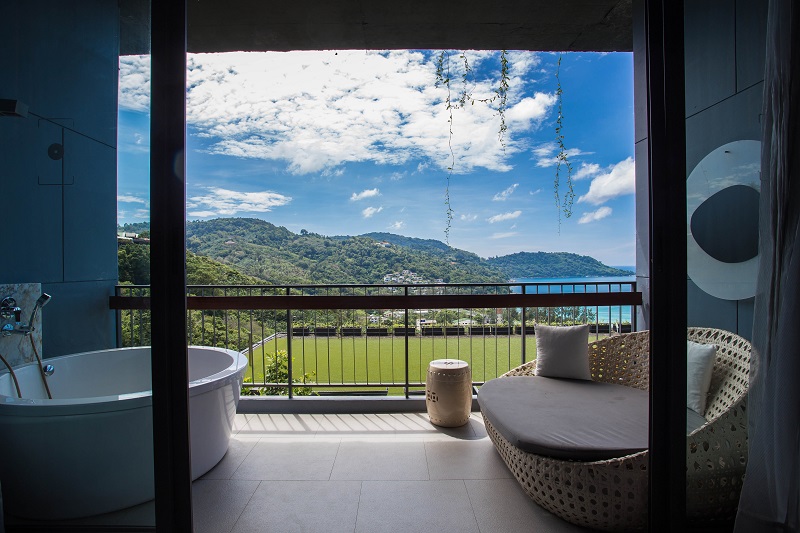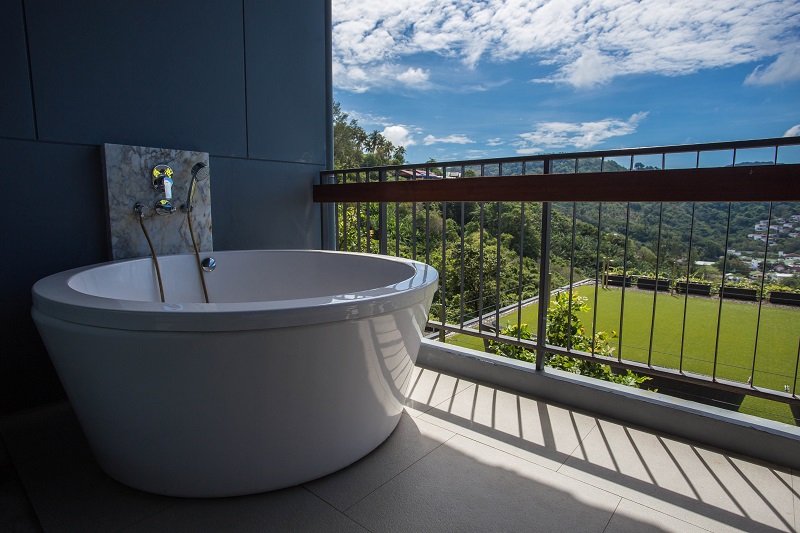Balconies need to be water proofed as the moisture can penetrate the concrete and this can cause leakage of the rooms, which are below. The balcony waterproofing begins with pouring concrete and a curing agent can be used as well. This will help the product to evenly cure the concrete and remove whatever hairline cracks that is there as well as any hot spots. It also helps increasing the tensile strength and in reinforcement.

Balcony waterproofing
Before tiling, a coat of acrylic primer, which is waterproof should be applied to the floor as well as the edges of the entire balcony. In addition, the corners and joins of the floor and walls need reinforcing tape in case there are any movements in the joints. Also, a leak control flange is required to the drain pipe so moisture which enter the tiles or which enters the grout are sent to the drain.
The finished tiling should be such that the drain point should be the culmination for moisture from all angles to collect and drain away. In order to prevent grouting from getting discolored or from there being waterborne stains, a special grout as well as render waterproofing needs to be added. Grout seal also helps to waterproof grout.
Incase grout has been discolored or has fine cracks or has deteriorated then the damaged grout needs to be removed and grout bond and seal should be used. This sticks to the old ground, recolors and waterproofs it once curing is over.
The waterproofing issues can be resolved first by application of products to tiled areas however, in this case, the concrete base needs to be sound. If there is damage to it, then applying products above the surface will not solve the issue.
One of the tests that can be conducted is the audio test. If the tiles make a hollow sound then what is possible is that the expansion of tiles has happened and the joints are either not of the right width or not as plentiful as needed and so expansion and contraction is not allowed.
The more comprehensive and more expensive option as well is for removal of tiles completely and then application of waterproofing. However, this option if undertaken, should be done by a professional rather than doing it yourself.
Waterproofing jobs need to address the following signs:
- Drainage which is insufficient
- Cracks to the substrate
- Damaged substrate
- Cracked grout or missing grout
- Signs of efflorescence
- Failed waterproofing membrane or one that is missing.

Balcony waterproofing Brighton
Efflorescence happens when there are salts, which accumulate and build up either on top or around the edges. This can only happen when there is water and so when there is visible efflorescence, it means that the water is not being drained properly but is pooling.
A waterproofing membrane is to be installed around the entire perimeter of the area, which is tiled so that a waterproof barrier can be effectively created. For successful installation however, the installation of applications need to be followed carefully. If the membrane is not installed and selected correctly, it degrades due to emersion and breaks down or it re-emulsifies and water is allowed to migrate through it and reach adjacent surfaces. Once water reaches the concrete structures, it tends to migrate to large distances and causes issues with not only the masonry but also the metal surfaces and leads to self-destruction.
Penetrating sealer is needed over grout as it blocks the water from penetrating. When missing or cracked grout is replaced, External tiling needs to be treated with reapplication of penetrating water repellant as part of regular maintenance. If you want to know more then go through this link to get detail information on balcony waterproofing.














